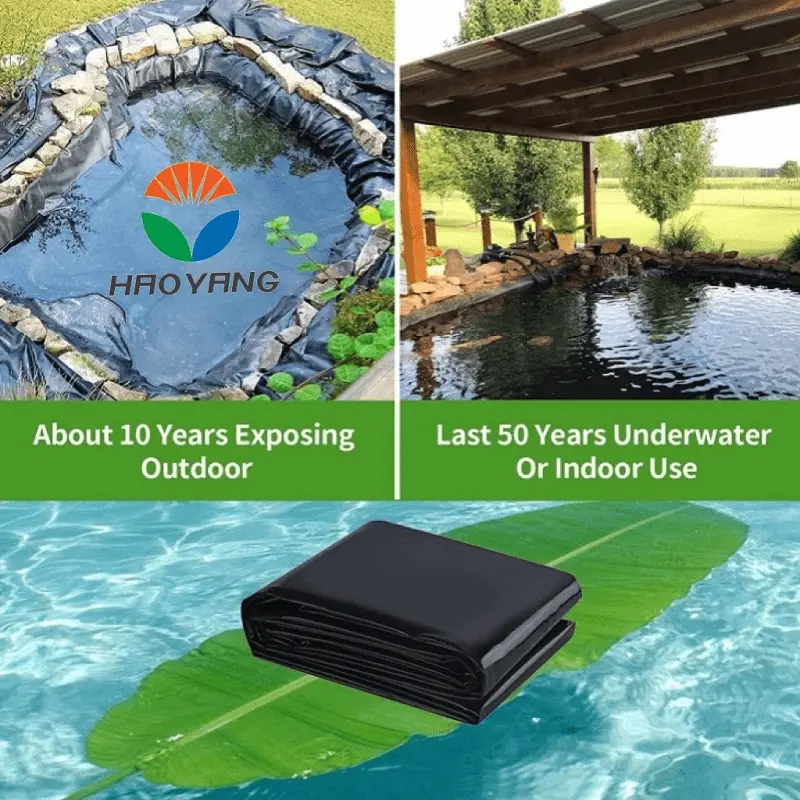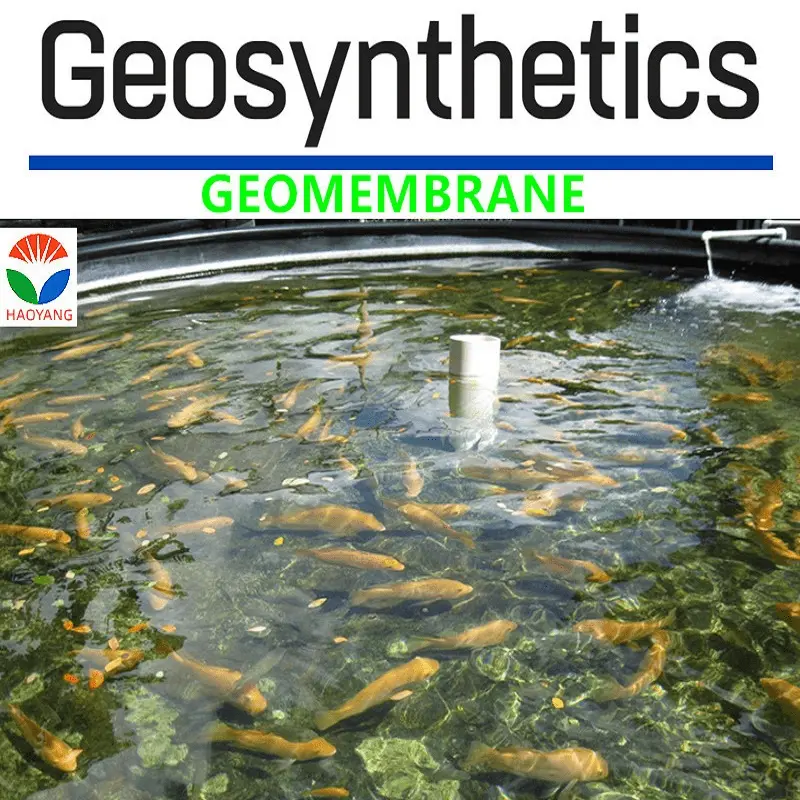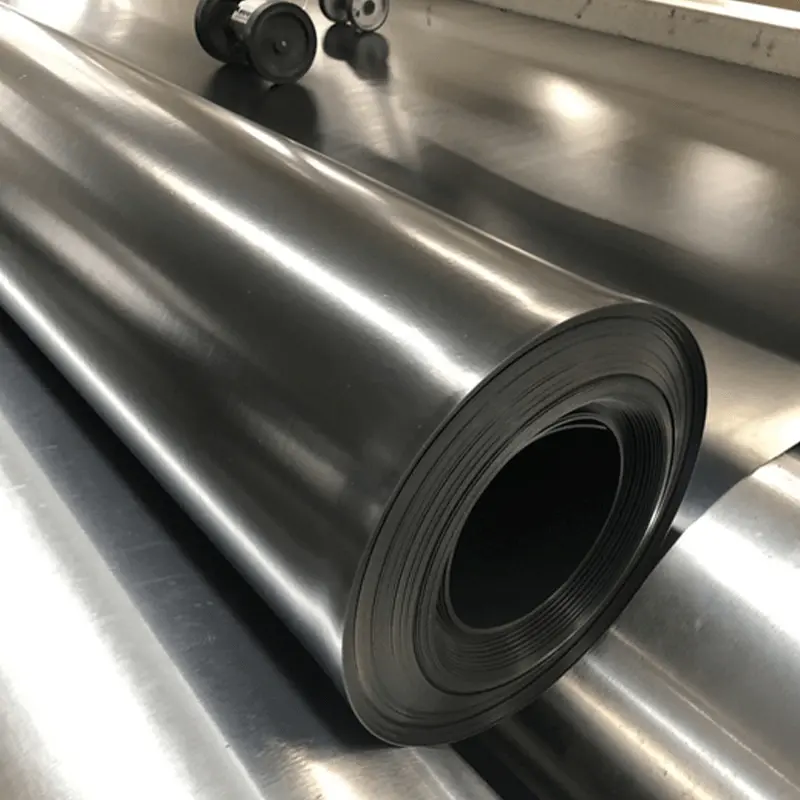1. Introduction
In pond liner projects, choosing the right geomembrane material is crucial to ensure the long-term stability and effectiveness of the pond. HDPE (High-Density Polyethylene) geomembrane and LDPE (Low-Density Polyethylene) geomembrane are two common types of geomembranes. This paper will compare their performance in various aspects to determine which is more suitable for pond liner applications.
2. Physical Properties Comparison
| Property | HDPE Geomembrane | LDPE Geomembrane |
|---|---|---|
| Density | 0.94–0.96 g/cm³ | 0.91–0.925 g/cm³ |
| Melting Point | 125–135°C | 90–100°C |
| Transparency | Generally opaque | Transparent with moderate clarity |
| Toughness | High | Moderate |
| Flexibility | Moderate | High |
HDPE geomembrane has a higher density and melting point compared to LDPE geomembrane. This results in better mechanical strength and thermal stability for HDPE geomembrane. LDPE geomembrane, on the other hand, is more flexible and has better transparency, but its mechanical strength is relatively lower.

3. Chemical Resistance
HDPE geomembrane exhibits excellent chemical resistance to a wide range of chemicals, including acids, alkalis, and salts. This makes it suitable for use in environments where it may be exposed to various chemical substances. For example, in industrial waste ponds or agricultural ponds containing fertilizers and pesticides, HDPE geomembrane can effectively prevent chemical corrosion and ensure the long-term integrity of the pond liner.
LDPE geomembrane also has good chemical stability and can resist the erosion of many acids, alkalis, and salt solutions. However, its resistance to solvents is relatively poor. In some specific chemical environments, such as those containing strong organic solvents, LDPE geomembrane may be more prone to degradation and performance loss.
4. Mechanical Properties
| Property | HDPE Geomembrane | LDPE Geomembrane |
|---|---|---|
| Tensile Strength | High | Moderate |
| Tear Resistance | Strong | Weak |
| Impact Resistance | Good | Fair |
HDPE geomembrane has higher tensile strength, tear resistance, and impact resistance compared to LDPE geomembrane. This means that it can withstand greater external forces and deformation without breaking or tearing. In large-scale pond liner applications, where the geomembrane may be subjected to various loads such as soil pressure, water pressure, and mechanical impact, HDPE geomembrane can provide better structural support and durability.
LDPE geomembrane, while more flexible, has lower mechanical strength. It may be more prone to damage under heavy loads or sharp objects, which can affect the sealing performance and service life of the pond liner.

5. Environmental Factors
5.1 UV Resistance
HDPE geomembrane has better UV resistance than LDPE geomembrane. It can withstand long-term exposure to sunlight without significant degradation or color change. This is important for outdoor pond liner applications, where the geomembrane is directly exposed to sunlight.
LDPE geomembrane is more susceptible to UV radiation and may experience rapid aging and performance degradation when exposed to sunlight for extended periods. To improve its UV resistance, antioxidants and UV absorbers are often added during the manufacturing process, but this may increase the cost and complexity of the material.
5.2 Temperature Stability
HDPE geomembrane has good temperature stability and can perform well in a wide range of temperatures, from -40°F (-40°C) to higher temperatures. It can maintain its mechanical properties and sealing performance even in extreme weather conditions.
LDPE geomembrane has relatively poor temperature stability. At high temperatures, it may soften and deform, while at low temperatures, it may become brittle and prone to cracking. This limits its application in environments with significant temperature fluctuations.

6. Application Suitability
6.1 Large-Scale Ponds
For large-scale ponds, such as industrial waste ponds, agricultural irrigation ponds, and water storage ponds, HDPE geomembrane is generally the preferred choice. Its high strength, good chemical resistance, and excellent environmental stability make it suitable for long-term use in these demanding applications. HDPE geomembrane can effectively prevent water leakage and chemical contamination, ensuring the safety and reliability of the pond.
6.2 Small-Scale or Temporary Ponds
In some small-scale or temporary pond applications, such as garden ponds, fish farming ponds, and construction site sedimentation ponds, LDPE geomembrane may be a more cost-effective option. Its good flexibility and ease of installation make it suitable for these applications where the requirements for mechanical strength and chemical resistance are relatively lower.
7. Conclusion
In conclusion, HDPE geomembrane has significant advantages over LDPE geomembrane in terms of strength, chemical resistance, UV resistance, and temperature stability. It is more suitable for large-scale and long-term pond liner applications where high performance and reliability are required. However, in some special scenarios, such as small-scale or temporary ponds, LDPE geomembrane can also be a viable option due to its lower cost and good flexibility. When selecting a geomembrane material for a pond liner project, it is important to consider the specific requirements of the application, including the size of the pond, the chemical environment, the expected service life, and the budget constraints. By carefully evaluating these factors, the most suitable geomembrane material can be chosen to ensure the success of the project.
![]() 1.5 Double-sided smooth HDPE geomembrane.pdf
1.5 Double-sided smooth HDPE geomembrane.pdf

897.webp)
942.webp)
237.webp)